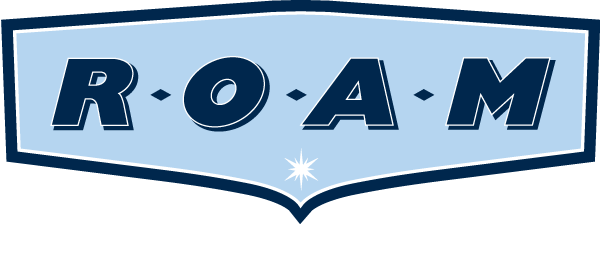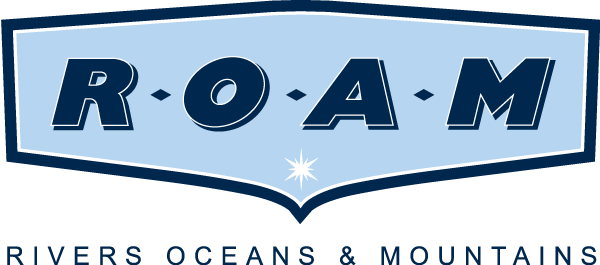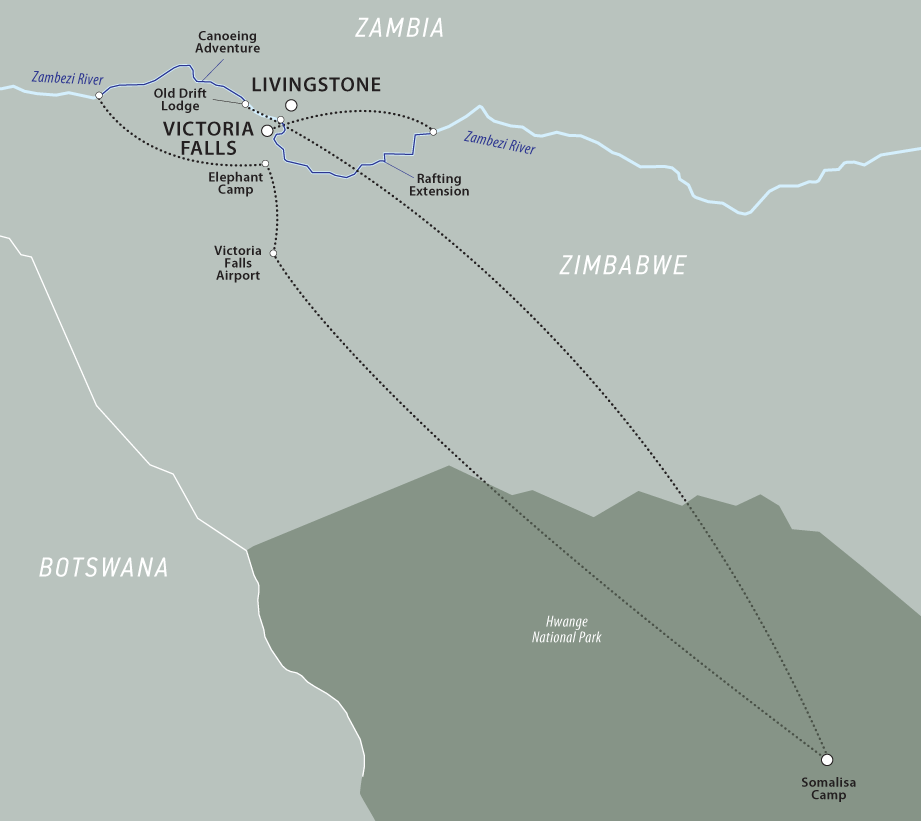10 Day African Safari & River Exploration
$7995 - $8500
per person based on double occupancy
Zambezi Rafting Extension: $2000
2025 Dates:
FOLLOW THE LEADER
Join ROAM’s Brian McCutcheon on our October 25, 2025 departure!
2026 Dates:
Deposit: $1000 Single Supplement: $2000 Meeting Place: Victoria Falls, Zimbabwe or Livingstone, Zambia Gateway City: Johannesburg, South Africa River Rating: Class I-II Age Range: 10 – 80
Explore the Zambezi River Basin and the game parks of Zimbabwe. Visit the Devils Pool in Zambia and revel in one spectacular African adventure after another. This incredible journey starts at The Elephant Camp in Victoria Falls National Park, where you will get the opportunity to meet the elephants at their sanctuary. From there you will shuttle to our put-in above Victoria Falls for two day/two night canoe safari. Our deluxe mobile tent camp is complete with beds, flush toilets, hot showers and catered by a professional chef. We’ll end our paddling adventure at the Old Drift Lodge above the falls for two days of game drives and river safaris before heading into the heart of Hwange National Park. Game viewing, kayaking and hiking are just a part of this active and rewarding wildlife safari. September through November are the best months to see game and experience the Zambezi Basin as it’s the end of the dry season and all of the animals come down to the banks of the river to drink, swim and frolic in the shallows. The bush has been either eaten or has died down, so seeing the animals is much easier.
Our unique trip combines five star decadence with fun-filled days of adventure while exploring a wide variety of environments in search of the Big Five. We will visit a number of highly developed and protected national parks as well as exploring remote wilderness areas rarely visited. The wildlife in the Zambezi Basin has thrived and the elephant herds of Zimbabwe are among the largest and most protected of Africa. The game viewing is outstanding and our trip allows you to experience Africa without the crowds. We use 5 star luxury camps combined with wilderness outpost camps so you get to immerse yourself in true African style. This trip offers a multi-day Zambezi Rafting extension and dovetails perfectly with our Cape Town Multi-Sport.
Itinerary at a Glance
- Arrive Victoria Falls and transfer to Elephant Camp to indulge your senses for 2 nights at this private luxury camp within Victoria Falls National Park
- Cocktails on the gorge, meet a parade of rescued elephants, explore Victoria Falls
- Plunge into the Devil’s Pool in Zambia
- Transfer to our put-in on the calm upper Zambezi River for 2 days/2 nights on a canoeing/kayaking safari watching hippos, giraffe, elephants and crocs
- Indulge yourself with 2 nights of riverside luxury at Old Drift Lodge, the Zambezi’s newest 5 star safari camp
- Travel into Hwange National Park for an over-the-top 3 night experience at Somalisa Camp
- Enjoy day and night safaris in pursuit of the Big 5 in Africa’s most bio-diverse game park
- Optional Extension to raft the Class V mighty Zambezi River through Batoka Gorge (extension includes 2 nights lodging pre/post and 3 days/2 nights on the river)
What to Expect on the Zambezi River Explorer
Days 1 and 2
Arrive at Victoria Falls Airport, Zimbabwe (or Livingstone, Zambia). Soon after you land, we will transfer to the Elephant Camp and rendezvous with our trip leader for a welcome briefing.
Elephant Camp is world-class safari camp offering a peaceful experience in the heart of Africa. The facilities consist of deluxe and spacious safari tents with inside/outside showers, soaker tubs, plunge pools, private bar, flush toilets, and even WiFi. There is a gorgeous central dining area and lounge area with expansive views. Elephant Camp is located close to Victoria Falls but in a private concession within the park, where they operate an animal rescue centre.
Days 3 and 4
The African canoe safari is more of an “inflatable kayak” safari rather than what North American’s refer to as canoes. Easy to paddle and very stable, our large inflatable kayaks are an ideal vessel to explore the Upper Zambezi and its network of coves and shoots. It all starts with a tour of Victoria Falls, lunch at the lookout and fun opportunities to try zip lining, gorge swings or a canopy tour before we take a scenic ride in to the river camp. On safari through Victoria Falls National Park, it’s common to see giraffe, elephants and lots of baboons along the way. Upon arrival, we do an orientation and meet the rest of the crew. This portable riverside camp has wall tents, cots with duvets, a large riverside dining area with a chef, flush toilets and even a hot shower.
Our days start at dawn for tea or coffee followed by an “English” hot breakfast. After breakfast we start paddling in two person “kayaks” which are stable and easy to maneuver. The rapids are entertaining but the wildlife is the main reason we are here. Overnighting on the banks of the Zambezi you should be ready for anything. Trips in the past have been woken up early by large herds of elephants crossing the river and coming right through camp. As it will be the dry season, we will hope to see animals as they come down to the river to drink. We generally see elephant, zebra, bushbuck, kudu, Cape buffalo, ubiquitous baboons, impala, giraffe and the occasional bush duiker. The bird life is an ornithologist’s dream come true with the various ibises and Trumpeter Horn Bill standing out. Of course, a glimpse of a Lilac Breasted Roller would be welcome as well. The river gets up to a mile wide at times but also channels around sand banks and reed islands. These are the best places to find hippos and crocodiles. The other creatures we might also see are lions, leopards and the rare wild dog, just to mention a few. At dusk we’ll gather around and sit high on the bank overlooking the river. We’ll hear the deep, low decibel grumbles and burps of the hippos as they call out to announce their nighttime grazing rituals. A few waking lion might be heard as well. The bush will be alive with sound as night falls and we inch closer to the fire. Chances are better that we’ll hear the lionesses in the morning as they return from the dawn hunt.
Days 5 and 6
After a few days in the bush, we will paddle right to Old Drift Lodge. This luxurious and delightful safari lodge, is located in a private concession on the banks of the Zambezi River. The spacious canvas en-suite rooms exhibit and air of elegance that blends in seamlessly with the natural environment. The suites are resplendent with stylish furnishings and fittings, accentuated by an indoor and outdoor shower, private plunge pool and bath with a view.
While staying at Old Drift, we have a plethora of choices; a game drive through Old Drift’s private concession, a dip in the Devil’s Pool in Zambia, a riverboat cruise or a horseback ride or a walking safari. Whatever you choose, returning to Old Drift for a sundowner around the fire pit to discuss upcoming plans will certainly have an air of opulence and grace!
Days 7 – 10
After breakfast we will travel to Main Camp where we will transfer into an open air safari vehicle and head to Somalisa Camp into the heart of Hwange National Park, one of Africa’s most bio-diverse game parks. Lion, leopard, cheetah, elephants, hippos, Cape buffalo and of course thousands of elephants are here to drink from a series of underground springs that the park pumps to the surface and we’ll spend our days (and some nights too) on safari, returning each evening to the sublime appointments for Somalisa. At the end of our stay at Somalisa Camp, will fly back in chartered aircraft to Victoria Falls airport for connecting flights home, or perhaps extend your stay in Africa with our Cape Town Multi-Sport or our deluxe Zambezi River rafting extension, which would involve overnighting tonight in Victoria Falls for an early start to the river next morning.
Zambezi River Rafting Extension (before or after your Zambezi Explorer trip)
Days 11 – 13
Our rafting adventure begins with a hike down a steep trail to meet our waiting rafts. After a safety briefing, we launch downstream and begin our river journey toward the Indian Ocean. With both paddle and oar boats, our days are spent navigating some the world’s biggest and most dynamic rapids. The river gorge starts out deep and steep, twisting and bending to form a series of sinuous goosenecks. The canyon rim looms overhead as we come face to face what some call “Nyami-Nyami”, the Zambezi river god, more easily recognized as the heart pounding and enormous rapids (about one per mile).
On our first day we will challenge more than 20 rapids before reaching and expansive riverside camp. The air is hot and dry, the water a mild 70 degrees and the breeze that sweeps up the canyon is fragrant with the wilds of Africa. Our first night’s camp is where we meet our gear as porters carry it into the gorge for us. This camp is complete with tents, dining area, portable toilet and a spacious beach. The gear boat guides will meet us here as we bring everything downriver with us from this point.
Once we are “self supported” we’ll raft deeper into the Batoka gorge, running Wake up Call, Open and Closed Season and camping on big sandy beaches. As we travel downstream, the rapids spread out and we enter some big open valleys. We also come upon two waterfalls. The first, upper Moemba we will run and the second is an easy portage as we lower the rafts over a 30-foot vertical cliff into an eddy-pool below. On our last river day, we will walk out of the gorge to waiting vehicles to take us to our hotel where we will get cleaned up and celebrate our amazing experience on the river! Overnight Victoria Falls.
Day 14
After breakfast, we will transfer you to Victoria Falls or Livingston for flights home – or connections for your next outrageous adventure in Africa…
Accommodations
Elephant Camp Zimbabwe
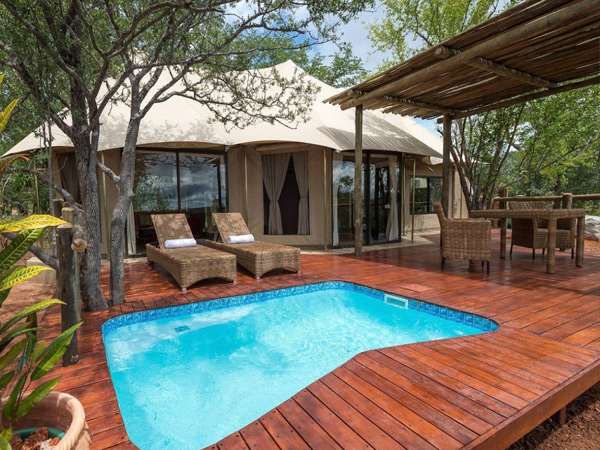
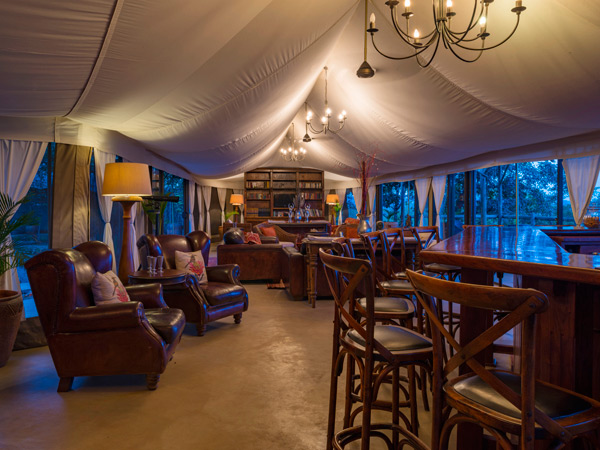
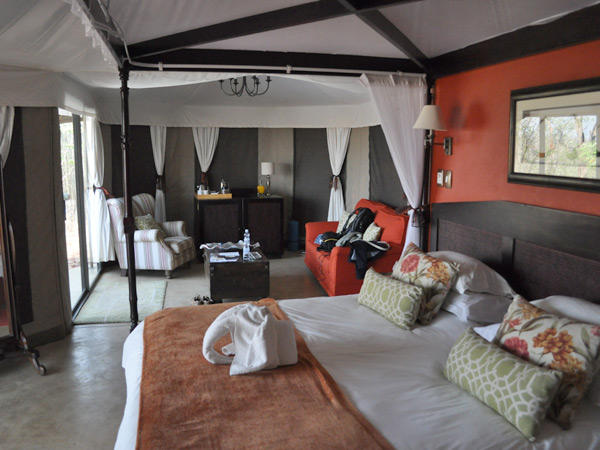
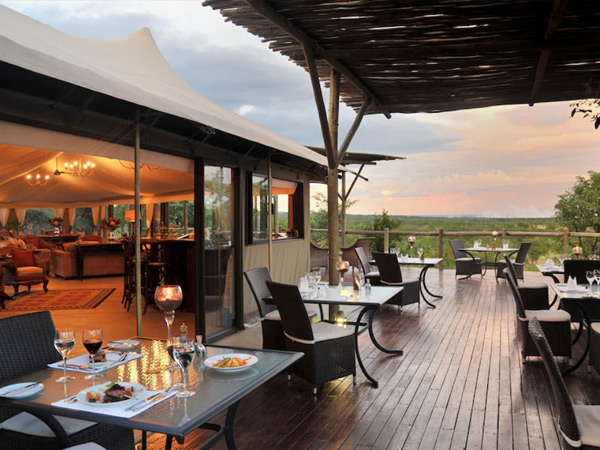
Elephant camp is situated only 10 minutes from Victoria Falls in a private concession within the Victoria Falls National Park. With an emphasis on exclusivity, the luxury tented suites all have private decks and plunge pools.
The suites are all equipped with indoor and outdoor showers, huge baths, private lounges, mini bar and tea/coffee stations, overhead fans plus air conditioning and are all mosquito proofed.
The Elephant Camp overlooks a waterhole that is fed by natural streams in the rainy season that rush down to meet the Masuwe River, and the Zambezi gorges below the Falls. Walks and birding for guests supply boundless photographic opportunities in addition to the variety of activities that are available in Victoria falls.
Old Drift Lodge
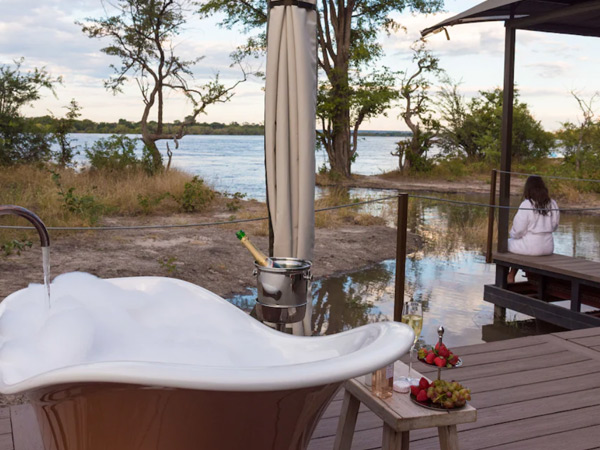
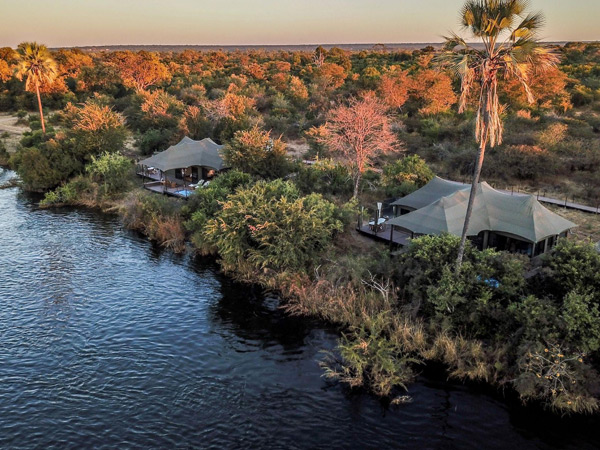
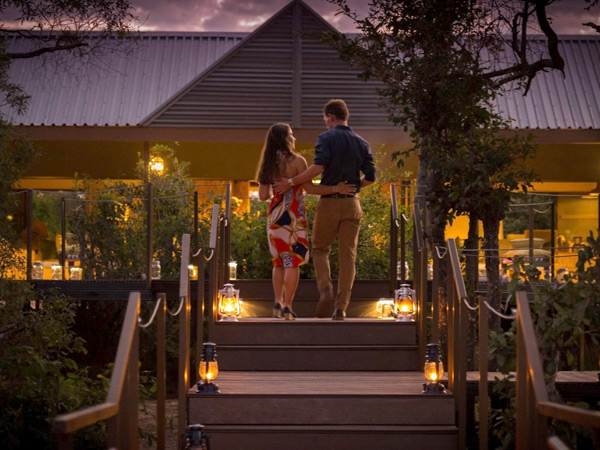
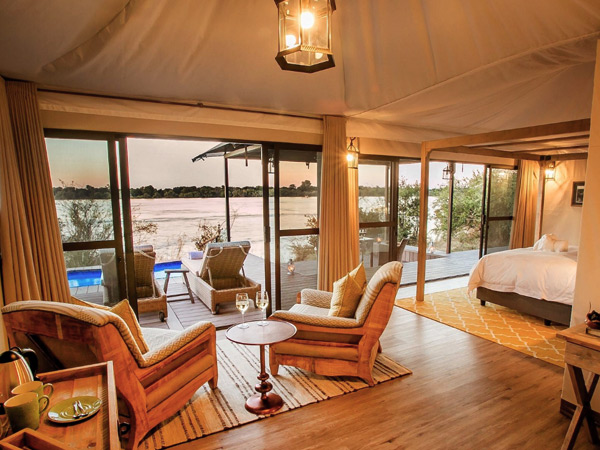
Set high on the banks of the Upper Zambezi, Old Drift sets ther new standard for luxury camps in Africa. Enjoying uninterrupted views of spectacular African sunsets and year round game, Old Drift Lodge is ideally positioned to offer the most discerning traveler a taste of Africa at its best
Somalisa Camp
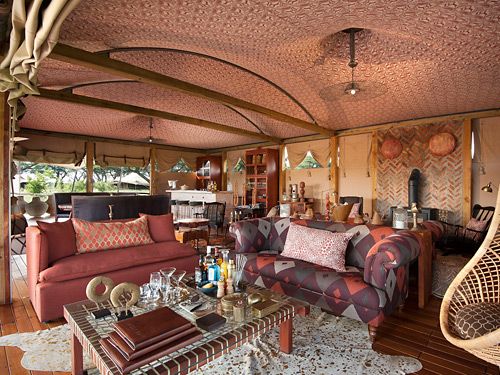
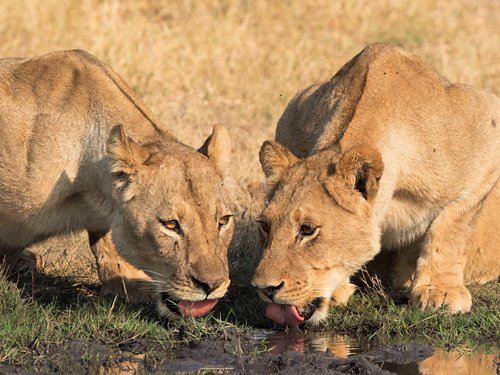

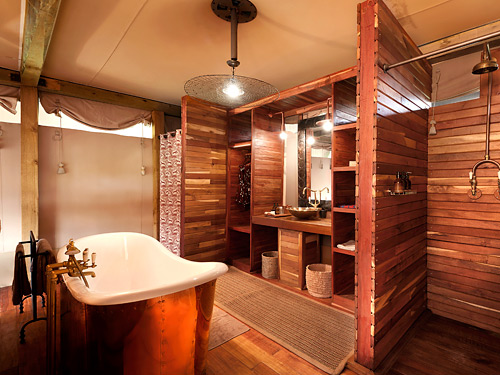
The award-winning Somalisa Camp provides guests with breathtaking views of the golden savannah plains of Hwange. A place where, one moment you are sipping on your gin and tonic listening to the distant baritone roar of a lion coalition on the hunt and the next, you are gazing over at a congregation of elephants mere meters away, peacefully sharing a sundowner with you.
This intimate bush camp is perfect for a relaxing Hwange safari with friends and loved ones. The elegant style is infused by natural wood and organic features of the bush. Kudhinda, the Zimbabwean national material, is thoughtfully paired with modern decor influences creating an authentic contemporary African style. Each guest tent is replete with modern appointments such as a fan, a battery charging station, wood-burning fireplace and private viewing deck. The bathrooms, worthy of a special mention, are inspired by the romance of yesteryear, and boast indoor and outdoor bathrooms featuring copper slipper-style bathtubs and endless views across the vast plains beyond.
About the Region
The Zambezi River
The Zambezi is Africa’s fourth largest River system, after the Nile, Zaire and Niger Rivers. It runs through six countries on its journey from central Africa to the Indian Ocean. Its unique value is that it is less developed than others in terms of human settlement and many areas along its banks enjoy protected status.
The Zambezi’s power has carved the spectacular Victoria Falls and the zigzagging Batoka Gorge. The Zambezi has been harnessed at various points along the way including the massive Kariba Dam between Zambia and Zimbabwe and Cabora Bassa Dam in Mozambique. Plans for another dam at the Batoka Gorge have fortunately been shelved. The river’s beauty has attracted tourists from all over the world providing opportunities for a myriad of water sports and game viewing.
Running for a length of 2700km, the river’s journey begins as an insignificant little spring in the corner of Northwest Zambia in the Mwinilunga District. It bubbles up between the roots of a tree, very close to the border where Zambia, Angola and Zaire meet. It enters Angola for about 230kms, where it accumulates the bulk of its headwater drainage, and re-enters Zambia again at Cholwezi rapids flowing due south but substantially enlarged by the entry of various tributaries.
It passes through the flat sandy country of the Western Province, then traverses the broad, annually flooding Barotse Plains, where much of the water is lost to evaporation, then over more rocky country where it’s tranquil course is interrupted by the Ngonye Falls and Rapids. Pastoralists, farmers and fishermen thinly populate this upper part of the river. Wildlife is sparse it is remarkably free of pollution. This is also the scene of the remarkable Ku-omboka Ceremony where thousands of inhabitants move annually to higher ground as the Zambezi floods into the low lying plains.
As it turns in an easterly direction it forms the border between Zambia and Namibia and eventually joins up with the Chobe River in the Caprivi Swamps, briefly forming a border with Botswana. For the next 500km it serves as the border between Zambia and Zimbabwe thundering over the Victoria Falls and through the narrow, steadily deepening Batoka Gorge, which flattens out at the broad Gwembe Valley. From here it flows into the Kariba Dam for 281km – its width at one point being 40km. From the dam wall the river travels due north, heading east again at Chirundu. Here it is flanked by the Lower Zambezi National Park on the Zambian side and Mana Pools National Park on the Zimbabwean side. This middle zone supports one of Africa’s most important wilderness areas. After the Luangwa Confluence, it’s a much larger Zambezi that flows into Mozambique and out towards the Indian Ocean, having provided power, food, pleasure and transport for many and a home for untold numbers of wildlife along it’s journey.
The Bundu people of Zambia believe the Zambezi River has a spirit called Nyami Nyami. This spirit brings them water to grow crops and fish to eat so they call the river “the river of life”. Perhaps the most spectacular spot along the river is in Zimbabwe at Victoria Falls. These falls are two times the size of Niagara Falls at 355 feet high and 5500 feet wide!
The Zambezi River is widely used by wildlife and humans alike. Hippos, crocodiles, baboons, elephants, hyenas and lions are some examples of wildlife you might find along the Zambezi. Humans use the river for transportation, irrigation, tourism and hydropower. The people who live along the river differ from country to country. English is the official language of the area though the different tribes along the banks of the Zambezi speak more than 70 other languages. Currently the countries along the river are at odds as to how to manage the river. In the future these countries must agree to manage “the river of life” so that its people can survive and its spirit can thrive.
Zimbabwe
Zimbabwe is a landlocked country in south-central Africa. It lies between the Zambezi River in the north and the Limpopo River to the south. The country has land borders with Mozambique to the north and east, South Africa to the South, Botswana to the southwest and Zambia to the northwest and north.
Most of Zimbabwe is rolling plateau, with over 75% of it lying between 610m (2000 ft) and 1,525m (5,000 ft) above sea level, and almost all of it over 305m (1,000 ft).
The area of high plateau, know as the High Veld, is some 400 miles long by 50 miles wide, and stretches northeast to southwest at 1,220m (4,000 ft) to 1,676m (5,500ft). This culminates in the northeast in the Udizi and Inyanga mountains, reaching the country’s highest point at Mt. Inyangani at 2,596m (8,517 ft). The middle veld is a plateau ranging from 610m (2,000 ft) to 1,220m (4,000 ft) high. Below 610m (2,000ft) are areas making up the Low Veld, wide and sandy plains in the basins of the Zambezi and the Limpopo.
The steep mountain ranges cut Zimbabwe off from the eastern plains that border the Indian Ocean. The High Veld is a central ridge forming the country’s watershed, with stream flowing southeast to the Limpopo and Sabi rivers and northwest into the Zambezi. Deep river valleys cut the Middle Veld. Only the larger of the many rivers have an all-year-round flow of water. Most of rivers have falls and rapids.
Zimbabwe is a land locked country, which lies wholly within the tropics. The main physical characteristics of the country are the high watershed areas, mostly between 1200m and 1500m, which roughly divide the country into two halves the southeast and northwest. In general, the altitude falls from the central watershed and escarpments towards the main river valleys, interrupted by secondary plateau, ranges and valleys which may be localized but do have a noteworthy effect on the local climate. Lake Kariba, covering over 5000km along the northwestern border has created significant climatic changes in its vicinity. The low lying main river valleys, Zambezi, Limpopo and Sabi are below 500m and some areas in these valleys may fall below 300m. Rainfall generally increases from south to north, since winds of a northerly origin are much moister than the winds of a southerly origin. However, the gradient may be distorted by elevation.
